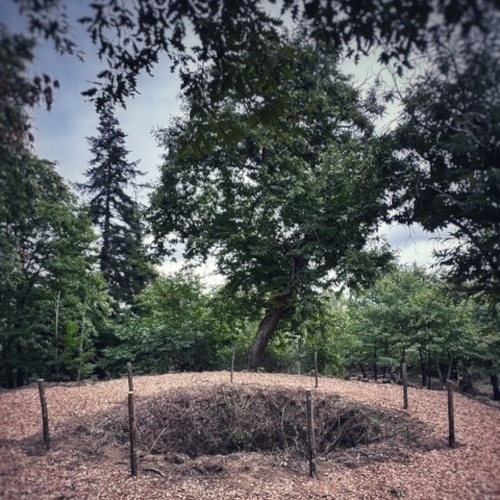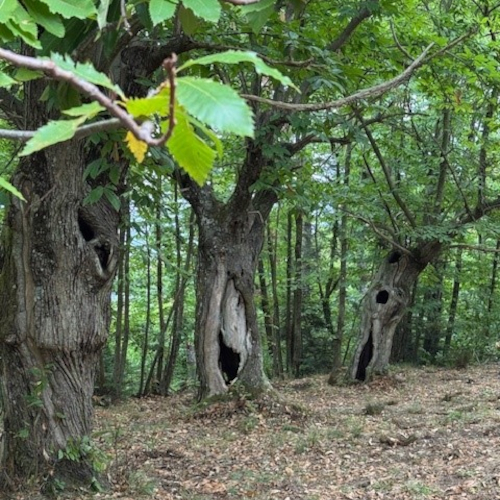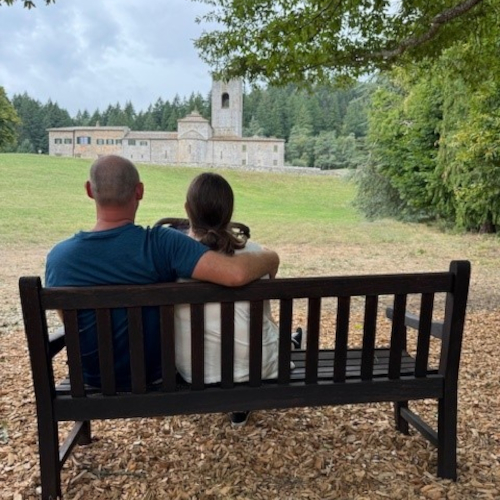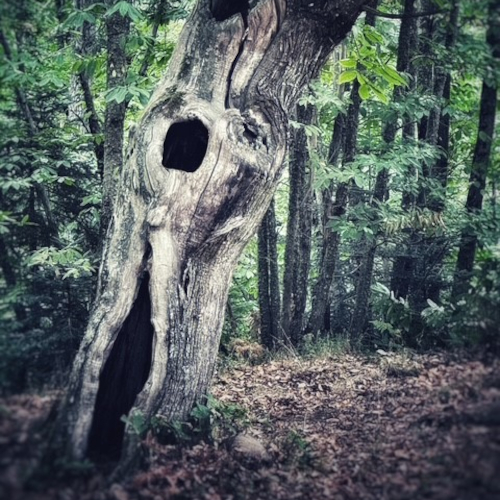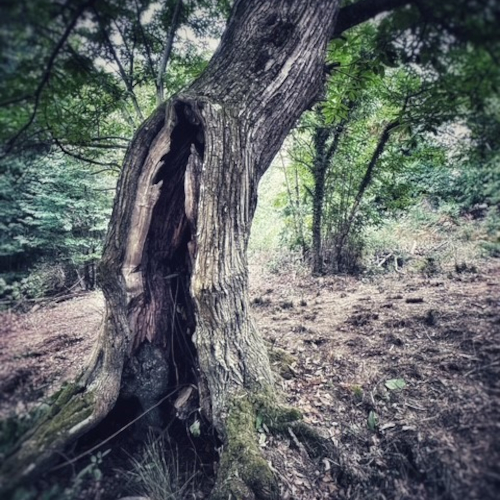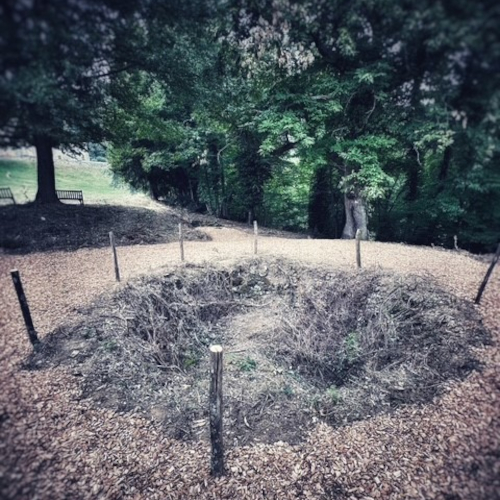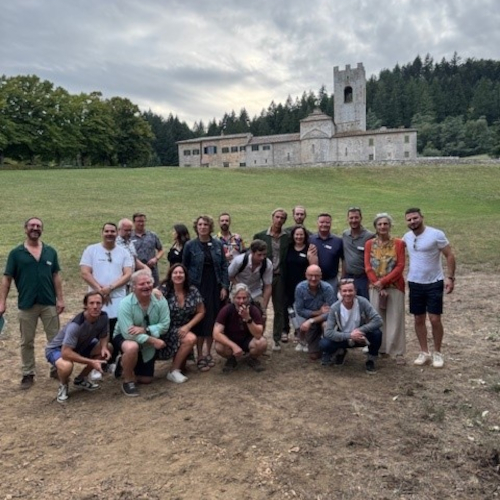The Enchanted Chestnut Grove
The new Coltibuono commercial
At Coltibuono, the story of the woods begins shortly after the year 1000, when the Vallombrosan monks arrived in these lands and made them the beating heart of their lives. Men of faith, but also pioneers of agriculture and forestry, they transformed the forests into a laboratory of knowledge and spirituality.
Around the trees, they built an economy that was surprisingly modern. They planted nurseries to repopulate the woods and cultivated different species, from beeches to ashes, from maples to lindens. The silver fir, rising straight toward the sky, became for them a symbol of man’s spiritual striving. The chestnut tree, almost unknown before the Middle Ages, was consecrated thanks to them: its sweet and nourishing fruits saved entire communities from famine.
Their knowledge went beyond sowing. They understood the secrets of the soil and knew how to soften the harshness of the Chianti mountains. They alternated trees with shrubs capable of enriching the land, such as mastic, or of feeding bees, such as pittosporum. Stone by stone, they created fertile soil teeming with life.
The monks observed nature with attentive eyes. They grasped the vital role of the woods as water reservoirs, capable of generating springs while at the same time tempering the violence of rainfall. For them, the forests were not only wood and fruit, but also protection against floods — a fragile balance to be safeguarded.
They also showed ingenuity with food. In the winter months, they collected ice and stored it in large underground pits, the ghiacciaie, to use in summer. In this way, they could preserve milk and cheese when the heat might otherwise have spoiled them.
Coltibuono was not just a monastery. It was a place where spirituality, work, and innovation merged into a single vision. In the woods, in the trees, and in the fruits of the earth, the Vallombrosan monks found a language with which to converse with God, leaving behind a landscape that still today tells the story of their work.



